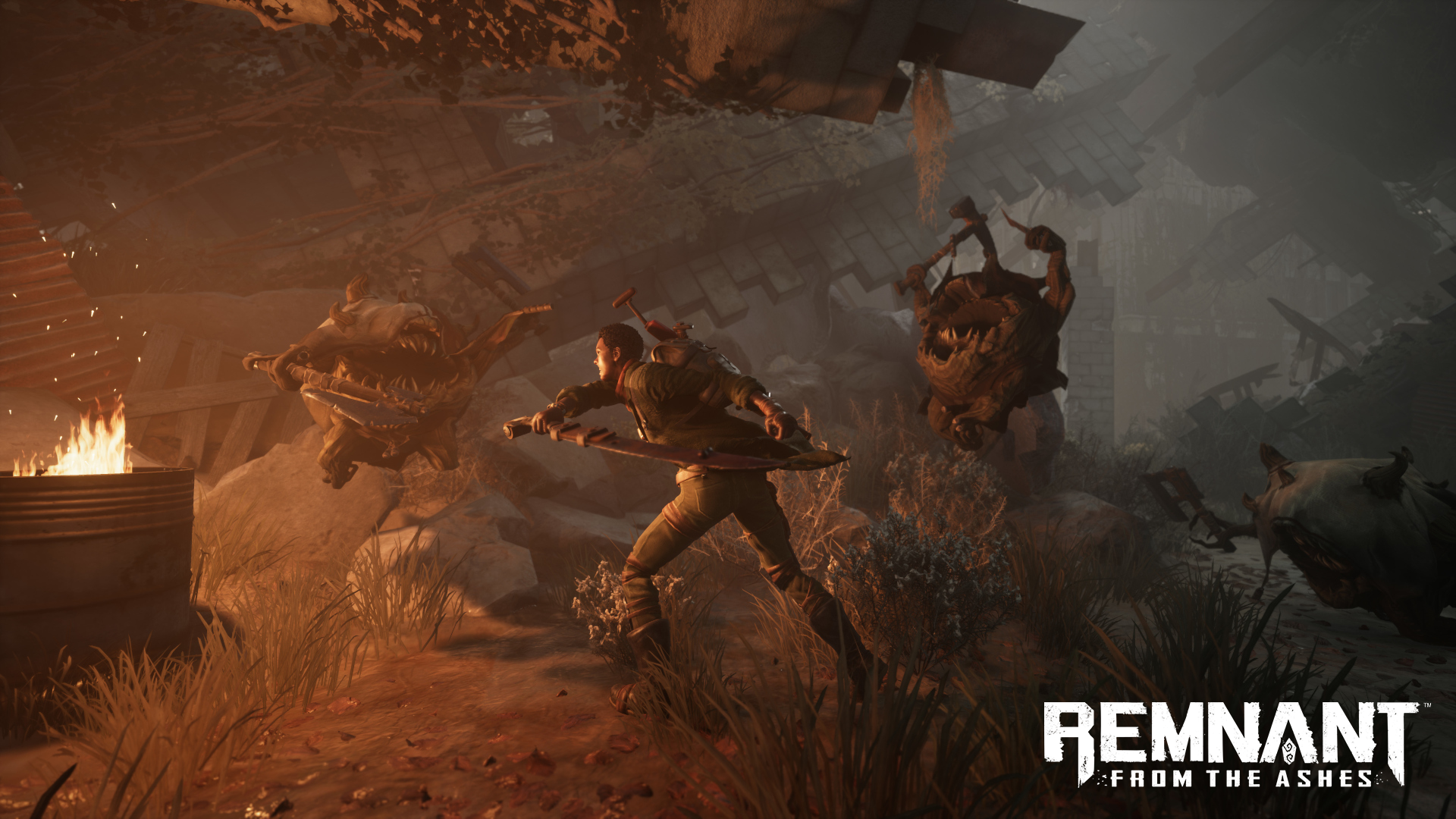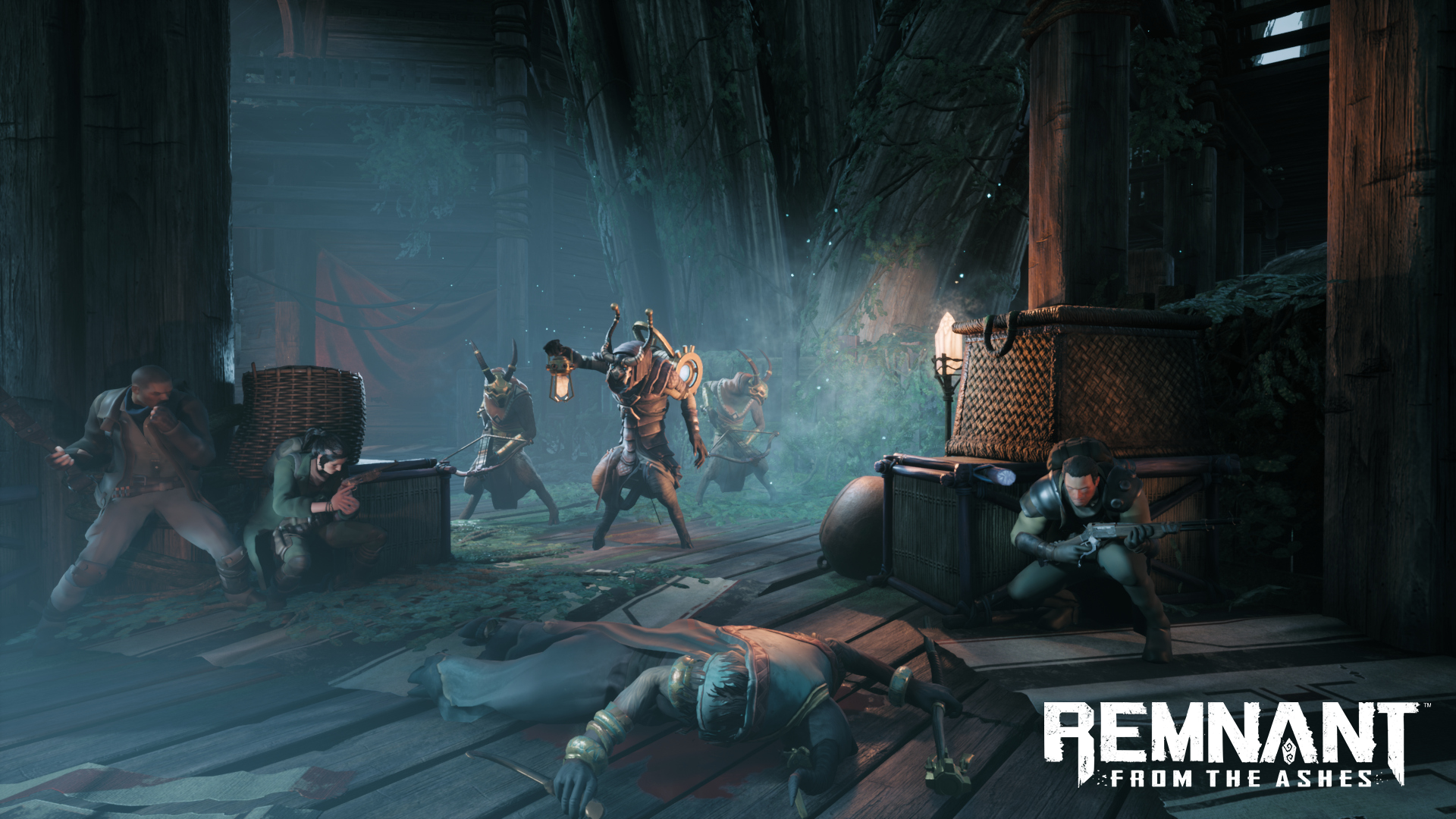Remnant: From the Ashes Is a Case of Randomness Done Right
Staff – August 8, 2019 at 11:15 AM
The explosion in popularity of the roguelike over the past few years has slowly and steadily made random generation a familiar element of many games. There’s no denying that randomness provides an effective means of driving replayability; a player is more likely to want to explore a dungeon they’ve never seen before than one they’ve plundered dozens of times.
The challenge that remains, however, is: How do you reconcile randomness and procedural generation with the need to tell a cohesive story? Gunfire Games’ co-op shooter Remnant: from the Ashes might have just cracked the code. Remnant darts between genres. It borrows level design ideas from hardcore action-RPGs, channels the unpredictability of roguelikes, and feels right at home with other modern loot shooters. Yet for a game in which levels are randomly generated, all pieces of loot are unique, and no two playthroughs are identical, Remnant manages to make the player feel like every moment was authored by hand and designed specifically for them.
Remnant takes place around 80 years after an alien race known as “the Root” invaded Earth and wiped out most of the human population. The player character is one of a group of human survivors who are on a mission to stop the source of the Root’s power.
“During this journey, the player will travel to numerous worlds and meet strange and unique races of creatures, some looking to help and some just looking for a fight,” Design Director John Pearl said. While some of Remnant’s environments invoke a typical earthly post-apocalypse — crumbling buildings, rusty abandoned vehicles — others are much more vibrant or green with foliage.
“The player should feel these dramatic shifts in the visual look and tone of the locations as they play through the game,” Pearl said. “From the decayed cities of Earth to the harsh wastelands of Rhom to the lush jungles of Yaesha, none of the worlds feel the same.”

In fact, the same world might feel different across two separate playthroughs. Remnant procedurally generates the layout of its levels, meaning every iteration of a level is unique. One player might stumble upon entire areas that are completely omitted from another person’s playthrough.
This principle applies to NPC encounters, as well, which serve as narrative vignettes. Examples of these encounters include meeting a man who has fashioned a makeshift home out of a helicopter or stumbling across a denizen of the sewers who believes that they hear voices from a sentient tree. These moments alone make the idea of playing through Remnant multiple times appealing; they add color and personality to every playthrough, making each one feel personal and distinct.
Pearl noted, however, that the generation of these levels isn’t completely random. Gunfire used many rounds of trial and error to determine the right constraints to implement so that levels still had thematic and visual identity across their countless iterations. “When each world is generated, it clusters visual themes together, so you still get a sense of place within the larger world with every new area you visit,” Pearl explained.

Even the loot is designed to feel unique to your playthrough. Gunfire Games wanted to avoid the pitfalls of other loot-shooters that might render looting redundant and dull. To do this, they designed every weapon so that it has a unique mod, which activates a special ability after the weapon is fired a set amount of time.
“You’re not churning through the same weapons just to find the best possible min-maxing stat line,” Pearl said. “The game is more about finding and crafting completely new weapons. With this approach, each piece of loot offers up potential changes to the way you play.”
All of this works together to allow the player to feel as though their run of the game is theirs and theirs only. This is something that could only be achieved in the space between a linear game and a full roguelike; while there are still carefully crafted narrative sections and richly detailed environments, every new moment — whether it be a boss battle, a random NPC encounter, or the discovery of a new area — feels singular.

Pearl argues that this makes the game especially conducive to co-op, as it encourages players to maintain their own personal saves while jumping in to help their friends out. It’s highly likely that you’ll see a new piece of the game’s content if you choose to join a co-op campaign.
“In your game, a street may have turned left and led to a sewer dungeon. When you play with your friend, however, the road might veer to the right and lead you to an encounter you never saw in your solo playthrough,“ Pearl said.
Remnant: from the Ashes heralds a new path for the loot-shooter genre. By placing less emphasis on grinding and more emphasis on replaying the game to access more unique experiences, Remnant provides much more substantive and meaningful reasons to spend dozens of hours shooting and looting across its worlds.
Remnant: from the Ashes will be available for PC on August 20, 2019.
Recommended specs:
- OS: Windows® 10 (64-bit required)
- CPU: Intel® Core™ i7-3930K or better
- RAM: 16GB of system memory
- Graphics card: NVIDIA® GeForce® GTX 970 or AMD® Radeon™ RX 480
- DirectX: Version 11












